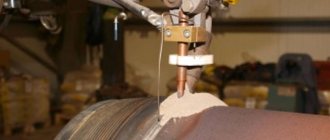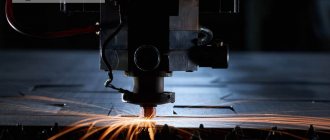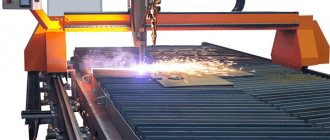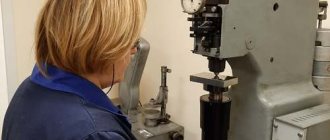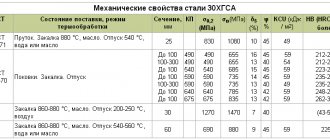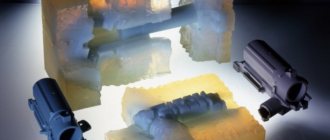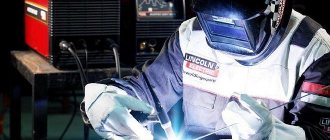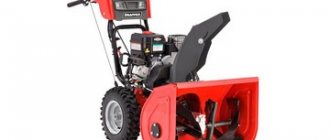02/18/2019 Author: VT-METALL
Issues discussed in the material:
- What types of metal cutting are in demand in modern industry?
- What are the types of plasma cutting of metal?
- What lasers are used for cutting various metals
- Where are various types of waterjet metal cutting used?
- What are the mechanized types of metal cutting?
- What types of scissors are used to cut different types of metal
- What are the advantages and disadvantages of different types of metal cutting
The production of blanks from sheet metal, as well as its cutting, is carried out strictly using special technologies that require certain operations. This takes into account the chemical and physical properties of metal alloys (their chemical composition, strength, fragility, electrical conductivity and heat resistance). As a result, parts and workpieces of the required sizes should be obtained while maintaining the properties of the connection. To ensure high-quality performance of technological operations, different types of metal cutting are used. They differ in scope and complexity of operations performed.
Briefly about industrial types of metal cutting
Today, technologies are most often used that are characterized by high speed of production of parts and the highest accuracy of work. Large metalworking enterprises use the following types of cutting:
- gas;
- plasma;
- laser;
- waterjet;
- mechanical.
We recommend articles on metalworking
- Steel grades: classification and interpretation
- Aluminum grades and areas of their application
- Defects in metal products: causes and search methods
Gas metal cutting
- this is the effect on the material of a jet of oxygen-propane mixture, the temperature of which is much higher than the melting point of the metal. This type of cutting is similar to electrode cutting and is characterized by low cutting accuracy. The operation can be performed in various conditions without the use of complex equipment, unlike welding, which requires an electrical network.
Plasma cutting
is produced by exposing a metal sheet to a plasma jet at a temperature of +5000 to +30,000 °C. The jet is accelerated by an electric field to a speed of about 1500 m/s, which is enough to cut a metal sheet up to 20 cm thick. As a result of exposure to hot plasma, a fairly even and smooth cut is obtained that does not require further processing.
Today, this type of metal cutting is one of the fastest and most accurate. The material around the cutting area does not overheat, its structure does not change. This method is used mainly to process dielectrics and sheets of electrically conductive metals of varying degrees of hardness.
Laser cutting
The accuracy is comparable to plasma. Instead of plasma, a laser beam is used here to melt the metal sheet in the cutting area. Thanks to high-precision focusing and high power of the laser beam, the metal not only melts, but also instantly evaporates, leaving the cut line clean and smooth. When processing sheets with a thickness of more than 15 mm, additional blowing of the cutting line with inert gas or cooling with water is required. Laser cutting is usually used to produce parts of complex shapes from sheets of relatively small thickness (up to 20 mm). Steel and its alloys and various non-ferrous metals are used as blanks. The main advantage of laser processing is its ability to process very thin and fragile types of materials.
VT-metall offers services:
Waterjet cutting
differs from other methods in that it affects the material mechanically and not thermally. The working body here is a mixture of water and an abrasive substance, which is supplied under ultra-high pressure. The cutting width with this method ranges from 0.5 to 1.5 mm.
For this method, you can use metal sheets up to 30 cm thick. It is typical that the temperature in the cutting zone does not exceed +90 °C. Therefore, structural changes in the metal in this zone associated with exposure to high temperatures are completely excluded. There are also no fumes or emissions harmful to humans.
This type of processing using CNC machines allows you to cut bundles of several sheets and thereby increase productivity many times over. A serious disadvantage of this method is the susceptibility of the metal workpiece to corrosion.
LPS
Used for cutting sheet and section metal. Replaceable band saw blades are their cutting element. Manufactured from bimetallic alloys and carbon steels.
The principle of operation is similar to making a cut with scissors. The saw blade is enclosed in a ring belt, which is continuously rotated by an electric motor, which provides an average cutting speed of about 100 mm/min. The optimal blade width is 1.5 mm.
Among the advantages of this technology are:
- high cutting precision;
- possibility of making straight and angular cuts;
- small amounts of waste;
- minimum cutting thickness;
- affordable price.
How different types of gas cutting of metal are performed
The principle of gas cutting is based on the property of metals to burn in pure oxygen at a temperature of +1200...+1300 °C. Today, this method not only cuts metal parts at different angles, but also processes the edges of workpieces for subsequent welding.
Cutting the workpiece begins from its edge. The surface of the sheet is first cleaned of traces of rust, scale and dirt. To cut the sheet, gas is used in cylinders under high pressure.
Compressed oxygen is usually used as a gas, the jet of which burns the metal workpiece to form iron oxides. The oxides are melted and blown out of the cut area. To supply oxygen, a special device is used, located on the welding torch. Technologically, the welding torch acts as a cutter.
In addition to oxygen, coke oven, petroleum and natural hydrogen, acetylene, kerosene and gasoline in the vapor state are also used; when ignited, they give a temperature of +3200 ° C. Accordingly, depending on the gas used, cutting can be hydrogen-oxygen, acetylene-oxygen and gasoline-oxygen. To a lesser extent, machine and manual methods are used.
There is also oxygen-flux treatment, which is classified as a separate type. With its help, you can cut such refractory and difficult-to-cut metals as cast iron, aluminum alloys, high-chromium and chromium-nickel steels. To facilitate the procedure, flux is added to the oxygen, and the resulting mixture is then blown out.
Direct cutting of the material is carried out with a jet perpendicular to the surface. In addition, compressed gas can be used to perform oxygen treatment, directing the cutting jet at an acute angle to the surface of the workpiece.
In this way, medium-alloy and low-alloy carbon sheet steel with a thickness of up to 300 mm is processed. Oxygen cutting is used both in the metallurgical industry and in individual construction. Using gas, you can cut fairly thick metal sheets. This is the main advantage of this method. The cutting width is from 2 to 2.5 mm. Hardening of the metal does not occur during processing. The cutting edge is perpendicular to the surface.
Oxygen arc cutting
Oxygen-arc cutting technology.
In oxygen-arc cutting, an arc burns between a consumable electrode and the metal being cut. The welding electrode is tubular and cutting oxygen is supplied through a channel inside the electrode. The arc provides heating of the metal, and oxygen, intensively oxidizing the iron, ensures its combustion and blowing out of the cut zone (Fig. 5).
Fig.5. Scheme of oxygen-arc cutting
Oxygen-arc cutting is used primarily for special work: cutting metal under water, construction and installation work, repairs, and also in other cases when it is necessary to perform short cuts (up to 500 mm).
Oxygen-arc cutting technique.
To cut, an arc is first ignited, then, when a molten point is formed, a flow of cutting oxygen is opened using the regulator handle on the holder, it quickly oxidizes the metal and blows it out.
Oxygen-arc cutting is used for cutting ferrous and non-ferrous metals up to 120 mm thick. Current strength 200–350A, oxygen pressure 3–10 bar (depending on thickness).
Semi-automatic oxygen-arc cutting is possible. In this case, the wire is blown with oxygen concentrically.
Equipment:
When using oxygen-arc cutting, equipment such as cutters, cables and hoses, a power source, a cylinder regulator, oxygen cylinders in combination with ramp equipment, or a gasifier are used.
Types of plasma cutting of metal
The use of oxygen has some disadvantages that are completely eliminated when using plasma. Appearing in the middle of the last century, the first equipment for plasma processing of metal workpieces was very expensive. Only large engineering corporations could afford it. By the end of the 20th century, the cost of equipment had dropped significantly, and this method of cutting material became more accessible. Now it is used in almost every industry.
Plasma processing of metal products can be surface and separation; the latter is the most common type of plasma treatment today. Direct cutting is carried out either by a plasma arc or a jet.
The use of a plasma arc is to create an electrical circuit in which the workpiece itself is included. An electric arc occurs between the tungsten electrode and the metal workpiece being processed. In the case of a plasma jet, an arc occurs between two electrodes; the metal workpiece is not included in the circuit, but is only cut by the resulting jet.
The principle of the technology is the rapid melting of a section of the workpiece along the line of action of a compressed electric arc and the subsequent blowing of the molten metal with a plasma stream. Since plasma is an ionized gas with a temperature of +15,000 to +20,000 °C, it cuts metal much more efficiently than compressed oxygen, which has a temperature of only +1800 °C.
Although the productivity of the plasma method is higher, oxygen treatment is better than plasma treatment for hard types of metals (for example, titanium). For cutting non-ferrous metals, and especially aluminum, preference should be given to plasma.
In the metalworking industry, plasma cutting today is the leader among other methods of cutting sheet metal. An important advantage of using plasma is the low requirements for equipment and, as a consequence, the cost-effectiveness of the method. All you need is an electrical network, air and consumables (electrodes, nozzles). As with oxygen, there is no need to use or move dangerous gas cylinders.
The use of plasma is economically beneficial for processing the following metals:
- aluminum and its alloys up to 120 mm thick;
- copper up to 80 mm thick;
- alloy and carbon steel up to 50 mm thick;
- cast iron up to 90 mm thick.
Plasma can also cut thicker metal (up to 200 mm), but for cutting workpieces with a thickness of more than 120 mm, it is more advisable to use the oxygen gas method.
The thickness of the metal sheet and its thermal conductivity are the determining characteristics for choosing a cutting method. The permissible thickness for a particular type of processing depends on the thermal conductivity of the metal. With an increase in thermal conductivity (respectively, with an increase in heat removal), the maximum possible thickness of the metal workpiece decreases. For example, a copper sheet for cutting should have a smaller thickness than a stainless steel sheet.
The undeniable advantage of the plasma cutting method over the gas cutting method is the cutting speed, which in this case is 6–10 times higher. This is especially true when processing metal sheets with a thickness of 40–60 mm.
Other advantages of plasma cutting include:
- high cutting accuracy without sagging;
- the ability to perform figure cutting;
- limited heating area, which prevents overheating of the entire workpiece;
- versatility of use without the need to change equipment;
- absence of explosive and fire hazardous elements;
- relatively low cost of equipment.
Modern CNC machines provide high speed plasma processing. In addition, the automated system allows an operator of any qualification to control the process.
Plasma metal processing eliminates the need to further clean the part. Even existing traces of rust, paint and various types of contaminants do not affect the quality of the cut.
Among the disadvantages of the method, we note, first of all, the thermal nature of the treatment. This means that the hardness of the cutting edge increases in relation to the rest of the workpiece, making possible further processing of the part more difficult. In addition, during the thermal cutting process, some of the material inevitably burns or melts. However, the plasma method is superior to the oxygen gas method in terms of the quality of the cut, the width of the zone with tarnished colors (it is 5 times smaller) and the presence of scale, which is absent when using plasma.
Types of heat treatment
In order to change the chemical-thermal structure of the metal and alloy, chemical-thermal treatment of metals is used.
The process technology is as follows: the metal or alloy is heated to a certain temperature, at which the chemical and technological properties change, and subjected to slow cooling (most often, the cooling rate of the material coincides with the speed at which the furnace cools).
Chemical-thermal and chemical-technological properties do not return to their original values.
Heat treatment can be both preliminary (to prepare for further processing) and final, during which the desired metal structure is achieved.
The following processing methods are used:
- annealing;
- aging;
- hardening;
- vacation.
The technology of metal annealing is heating to a specified temperature, maintaining this temperature level for a certain and slow time, to which the furnace itself is also subjected.
Annealing is required for workpieces that have been stamped or hot forged. It will reduce hardness, reduce heterogeneity and complete preparation for heat treatment.
When the heating temperature is exceeded, the alloy burns out, which is a technological defect.
The correct cooling rate is important for quality annealing. It is selected based on the required final technical conditions and steel grade.
Too slow a rate of temperature reduction (the part and the furnace cool at the same time) leads to the formation of local breaks in the bent sheet.
Conversely, too rapid cooling results in the appearance of fine grains within the steel structure. The hardness of steel is directly proportional to the amount of carbon in it.
Therefore, to normalize the structure, the steel is heated to temperatures of 700-720C, held for a short time and allowed to cool freely.
Isothermal annealing with two stages of temperature reduction is effective.
After heating, a gradual decrease in temperature is carried out - the first stage - to 630C, and subsequent holding at this temperature, the second stage - cooling to ambient temperature.
The technology, which includes staged cooling, not only promotes a uniform grain structure of the steel, but also provides the equipment with a continuous loading cycle.
Main types of lasers for metal cutting
The laser is one of the most spectacular inventions of the 20th century. Moreover, for a long time after the discovery, its true importance and applicability in industry was not understood. For many scientific minds, a laser was a kind of device capable of independently searching for solutions to various problems. Currently, laser technologies are used everywhere - from medicine to the space industry.
Laser cutting has been used in mechanical engineering for quite a long time. The first to use this technology were enterprises in the shipbuilding, aviation and automotive industries, which were interested in introducing advanced technologies to increase productivity. Growing competition has motivated manufacturers to implement innovative workflow management systems.
Enterprises today use the following types of machines for cutting metal using lasers:
- solid-state installations using compounds of rare earth elements and crystalline precious minerals, based on the principle of pumping photons with flash lamps or laser diodes;
- gas installations that use a mixture of inert gases as activators, excited by electrical discharges or a directed chemical reaction;
- fiber installations, where the active medium with a resonator is made of optical fiber entirely or in combination with other elements.
Anti-corrosion steels and non-ferrous metals are highly reflective. Therefore, laser systems with a resonator made of a fiber optic tube were created specifically for their processing, in which the laser beam is focused more strongly and is not scattered on the surface of metal workpieces.
Gas laser systems operating on a mixture of carbon dioxide, helium and nitrogen are widely used. For greater reflectivity, the resonator mirrors in this installation are coated with silver or gold.
Laser cutting technology is constantly being improved. To increase equipment productivity, accuracy and cutting quality, more and more new types of installations are being tested, computer control of processes is being introduced and becomes more complex with control of all processing modes.
Features of laser cutting of metal
During laser processing, a metal workpiece goes through several stages of exposure to a laser beam until the finished part is obtained:
- at the first stage, the laser beam, acting on the workpiece, heats it at the point where the cut begins to the melting temperature of the metal and forms a shrinkage cavity on the surface;
- at the second stage, under the action of laser energy, boiling and evaporation of the metal occurs at a given point;
- at the third stage, the workpiece is melted to its full thickness, and then the working element of the installation begins to move along the specified contour of the part.
Evaporation occurs only on thin metal sheets. Workpieces of medium and large thickness require blowing out particles of smelted metal with an auxiliary compressed gas, which uses oxygen, nitrogen, inert gases or air mixtures.
Compressed oxygen supplied to the cutting area performs several functions at once: it blows out particles of melted metal, cools the surface being processed, maintains the temperature of the workpiece and speeds up its processing. During operation of the machine, the workpiece is not deformed. Therefore, additional adjustment of parts is not required; accordingly, there are no material costs for these operations.
The prospects for using this technology today are obvious to specialists in the mechanical engineering industry. Laser processing can be used for conventional cutting of metal blanks and for high-precision production of complex parts for various units. Among the advantages of laser cutting of metal, we highlight the most obvious:
- high quality of the resulting products;
- low material consumption;
- the ability to delicately process fragile and thin workpieces;
- the ability to manufacture products of complex shapes.
The most significant disadvantage of the laser processing method is the high cost of equipment and materials.
Laser processing technology is currently in great demand among metal product manufacturers due to its ability to quickly and accurately produce all types of parts and at different scales - from single orders to industrial production. Laser technology is also in demand in the decorative products industry and in design, allowing the creation of original souvenirs.
Description and features of the process
Metal cutting is a technological process, the purpose of which is to divide a workpiece into separate parts or produce parts of various shapes. During machining, various milling and turning machines, as well as special metal-cutting equipment, can be used.
When carrying out the technological process under consideration, the following points are taken into account:
- Mechanical processing leads to heating of the material. Almost all metals react to heating in the same way - a change in the basic physical and mechanical properties occurs, the degree of ductility increases, and strength decreases. When it is necessary to obtain a high-quality cut, heating of the material structure is eliminated.
- Not all alloys can be processed without preheating. There are difficult-to-cut alloys, the cutting of which is possible only if the structure is preheated.
- When processing, attention is paid to such qualities as thermal conductivity, hardness and weldability.
Most often, cutting steel and other alloys occurs at the time of preparing raw materials for further processing, production of products, or, if necessary, changing the size and shape of finished products at the time of installation work. There are a huge number of cutting methods, each with its own specific properties.
Waterjet types of metal cutting: advantages and disadvantages
Waterjet cutting is the most advanced and innovative technology for cutting materials. Water supplied under ultra-high pressure is capable of cutting even thick sheets of steel (up to 300 mm).
The water jet system includes a pump, which in experimental versions can produce pressures of up to 6000 bar. Water, under enormous pressure, passes through a diamond, sapphire or ruby nozzle with a diameter of only 0.1 mm and is accelerated to a speed three times the speed of sound. The cutting jet is focused and powerful enough to cut through virtually any material.
Operation speeds reach impressive levels. For example, a 100 mm stainless steel sheet is processed at speeds of up to 22 mm/min. When processing a steel sheet with a thickness of 1 mm, the cutting speed can reach up to 2700 mm/min, and when processing glass – up to 11,000 mm/min!
Clean water is used for cutting soft materials. Cutting hard materials is possible by adding abrasive substances (usually granite sand) to the liquid.
As part of foreign experiments, waterjet technology was compared with more traditional cutting methods. In particular, comparisons were made with laser technology.
Laser and waterjet machines were used to cut stacks of metal sheets 0.3 mm thick. The result showed that packs with a total thickness of up to 6 mm are cut more efficiently by a laser, and packs with a thickness of more than 6 mm are cut more efficiently by a waterjet machine.
The most significant advantage of waterjet technology in comparison with other types of processing is the absence of strong heating of the workpiece. Since there is no thermal effect on the workpiece, associated deformation and stress are eliminated. The result is a cut of the highest quality that does not require additional processing.
Some materials cannot be laser cut due to their reflective properties. Plasma cannot process materials that do not conduct current. In both cases, waterjet processing will serve as a universal and effective method, but it must be used with caution on materials susceptible to corrosion, since during the cutting process the workpiece becomes wet.
The water jet is very thin, due to which a fairly narrow cut is created and there is much less material loss compared to thermal methods. This is another advantage of the waterjet method. At the same time, the method also has a rather significant drawback - its high cost. For example, an hour of operation of the installation will cost about 1,500 rubles. Due to high loads, working elements of equipment are subject to rapid wear and require periodic maintenance and repair. This translates into additional financial costs.
The temperature of the workpiece during such processing ranges from +55 to +90 °C. This allows you to work with different types of materials, the structure of which changes when heated. In addition to this obvious advantage, we list the other significant advantages of the method:
- possibility of using safe abrasives with water;
- the permissibility of processing a huge number of types of materials, with the exception of diamonds and tempered glass;
- possibility of cutting sheets up to 300 mm thick;
- absence of harmful gas and vapor emissions during operation;
- the ability of the working head to change the cutting angle;
- fire safety of equipment and the admissibility of its use in gas hazardous areas;
- obtaining a high-quality surface of the edge of the product with a decrease in its roughness and no melting.
Types of mechanized methods of cutting and chopping metals
For mechanical cutting of workpieces, all kinds of cutters, saws, abrasive wheels, and presses are used. Mechanical methods are used to cut, for example, gas and oil pipelines, as well as any pipelines for pumping flammable materials. Fireless metal cutting technology is popular both in industry and in everyday life.
Abrasive cutting wheels can be used in both hand-held and stationary tools. In the process of cutting a metal part with a rotating abrasive wheel, due to strong friction, the metal in the impact zone quickly heats up and burns out. At the same time, the cutting width is small and does not exceed 2 mm. Cutting is carried out with high speed and accuracy. It is convenient to use this equipment in domestic construction, repairs and installation of water pipelines.
For mechanical cutting of metal sheets, in addition to cutting, chopping is also widely used, in which a knife is pressed against a horizontally located sheet, and the workpiece is cut at the point of contact using hydraulic or pneumatic force. The operation of such a press is based on the principle of ordinary scissors, when two blades mutually slide past each other. To create force, in addition to pneumatics and hydraulics, eccentric mechanisms are also used.
Pneumatic or hydraulic shears are called guillotines; with sufficient power, they are capable of cutting strong and thick sheets of metal alloys. However, this method is not applicable to brittle and non-plastic materials; for cutting them it is better to use laser, plasma and other types of processing. Guillotines can be equipped with software that can increase the speed and accuracy of operations. This is the advantage of using this equipment.
Cutting of profiled sheets can be done with mobile saber guillotines, which do not require an electrical network and operate solely using human muscle power. The corrugated sheet is usually coated with galvanization or a polymer material, so it should not be thermally treated or cut using a grinder. The resulting local destruction of the coating creates pockets of corrosion that are quite difficult to eliminate.
Metal tiles can only be subjected to mechanical processing. In the longitudinal direction, the profile is cut with a roller cutter or metal scissors. For cutting in transverse or diagonal directions, use special electric scissors with appropriate attachments.
Types of scissors for cutting metal
In everyday life, a hacksaw and roofing shears are most often used to work with metal. It should be borne in mind that manual cutting with a hacksaw takes a lot of time and spends a lot of effort.
Tin snips provide much faster cutting. Let's look at the main types of scissors.
1. Hand scissors.
This type is used only for cutting thin sheets of metal. In this case, it is possible to ensure a fairly fast and accurate cut along the intended line. In turn, hand scissors are divided into the following subtypes:
- power;
- lever;
- finger;
- chairs;
- for cutting curved contours.
2. Slotted scissors.
This type of scissors can be used for both straight and curved cutting. They provide high-quality cutting of local sections of metal sheets. The tool is driven by an electric motor.
3. Guillotine shears.
Advantages of using this type of scissors:
- elimination of cutting defects;
- preservation of the coating of the processed material;
- high cutting accuracy.
Scissors perform longitudinal and transverse cutting of sheet material using an oblique guillotine knife. The oblique shape of the blade cuts the sheet at an angle, which reduces the required force. The greater the angle between the blade and the plane of the workpiece, the less force is required, but the worse the quality of the cut.
4. Manual guillotine shears.
This type of scissors has a significant drawback - they cannot cope with a sheet of very durable metal.
5. Mechanical guillotine shears.
This mechanism uses an electric motor, so its performance is higher compared to the manual version of the guillotine.
6. Guillotine shears with hydraulic drive.
An improved type of guillotine shears is often equipped with a CNC system, which allows for high productivity and cutting accuracy. In addition, all standard parameters of the operations performed are stored in the built-in software, which also has a positive effect on productivity.
Types of equipment
Machines designed for thermal cutting are divided into several types according to purpose, design and level of automation. Let's take a closer look at each type of machine.
Portal machines
They are a three-axis processing complex with a cutting table. Guides for longitudinal movement, depending on the type of equipment, can be located directly on the coordinate table or independently of it.
Photo 1. Gantry machine with guide rails on the work table
The machines are produced in stationary and portable types. They also differ in the size of the working area - the standard processing width can be from 1.5 to 8 m. They can work both in mechanized mode (the cutting process is controlled by the operator) and in automatic mode (cutting of workpieces is carried out using a CNC system).
Console models
Structurally, they consist of a guide rail and a console with a cutting device for air plasma (plasma torch) or oxygen gas cutting (cutter). The basis of such machines is a control and executive unit, which moves along a guide rail, providing longitudinal movement of the cutting apparatus. It also drives the console, which ensures the lateral movement of the cutting device.
Photo 2. Exterior view of a console-type machine
In terms of functionality and cutting accuracy, cantilever thermal cutting machines are in no way inferior to portal ones. However, they are mobile, so they can work with rolled metal of limited sizes.
Articulating and console equipment
The design of these machines consists of a column with a rotating crossbeam along which the cutting device moves. Cutting is done using a special compass device or according to a template using a magnetic copying device.
Photo 3. Articulating-cantilever thermal cutting machine
Machines of this type are distinguished by increased accuracy of reproduction of a given contour, an increased working area, and an easy-to-use remote control panel.
Pipe cutting machines
The equipment is designed specifically for mechanized cutting of pipes in the field (during the repair of main pipelines) and stationary conditions (at pipe welding bases). It is available in several modifications - with manual and electric drive, which determines the level of automation.
Photo 4. Operation of a manual pipe cutter
Structurally, the thermal pipe cutting machine consists of a self-propelled trolley with a rod with a cutter mounted on it. The device moves perpendicular to the pipe axis around the circumference using a drive, a sprocket and a hook chain.
Metallurgical machines for cutting large thicknesses
Such machines are usually used for straight-line cutting of slabs, blooms and half-rolls of large thickness in scrap metal processing and remelting plants. The design and equipment with special cutting devices provides the ability to cut thicknesses up to 1500 mm.
Photo 5. Separating cutting of hot castings in production conditions
To ensure maximum cutting thickness, high pressure of oxygen (from 3 to 25 kgf/cm2) and combustible gas (up to 3.5 kgf/cm2) is required. The mouthpiece in such equipment has optimal gas-dynamic parameters and is necessarily a water-cooled design.
Summary tables comparing various types and methods of cutting metals
| Type of cutting | pros | Minuses |
| Guillotine |
|
|
| Stamping |
|
|
| Felling |
|
|
| Band saw cutting |
|
|
| Oxygen gas cutting |
|
|
| Plasma cutting |
|
|
| Laser cutting |
|
|
| Waterjet cutting |
|
|
| Types of cutting | Laser | Plasma | Gas | Waterjet |
| Material | Any | Conductive | Concrete and reinforced concrete, non-ferrous metals, metal alloys (except for stainless steel, aluminum, copper and brass) | Any |
| Cutting width, mm | 0,1–1 | 2–7 | 0,9–1,2 | 0,5–1 |
| Cut quality | High | Average | Low | Very high |
| Performance | High with low material thickness | High for low to medium material thickness | Low (pre-heating of the workpiece is required) | Very low |
| Thermal heating zone | Average | Big | Big | Minimum |
| Recommended metal thickness, mm | Up to 30 | Up to 65 | More than 200 | Up to 150–200 |
With technological progress, new types of processing of thick metal sheets have appeared: cryogenic, electric pulse and ultrasonic processing. Appropriate equipment allows you to cut thick metal sheets most accurately. However, its cost is still quite high, so it is not yet popular.
Specialized equipment
Not only universal equipment, but also highly specialized equipment is suitable for cutting pipe edges for welding. You can choose based solely on the volume of work.
If we talk about universal machines, we can highlight angle grinders, bench tools and files.
Promotech presents a huge selection of narrowly targeted chamfering machines: edge cutters and chamferers of the BM and PRO series, which are perfect for performing a large volume of similar seams.
In cases where, according to the manufacturing technology of a part, its entire surface is subjected to one type of treatment, this is indicated on the drawing in the technical requirements, for example: “Anneal”, “Cement 0.5. 0.6 mm; 53. 60 HRC " " 30..35 HRC ".
In cases where, according to the manufacturing technology of a part, most of it is subjected to one type of processing, and the remaining parts are subject to protection from such effects, then the technical requirements must contain an entry of the following type: “35.40 НРС, except for the place specifically designated”, “45 50 HRC, except for surface A, etc.
Changes in metal properties
Heat treatment on drawings
In cases where areas or surfaces of products that are defined by a technical concept or term must be processed (for example, surfaces designated by alphabetic symbols, surfaces of a gear wheel or teeth, shanks of cutting tools or their working parts), then the current standards allow them do not indicate using a thick dash-dotted line, unless this will lead to misunderstanding of the drawing. In the technical requirements, the following type of inscription is made: “Surface B - 40.45 HRC”, “Shank h0.7. 0.9 mm; 45. 50 HRC ", etc.
